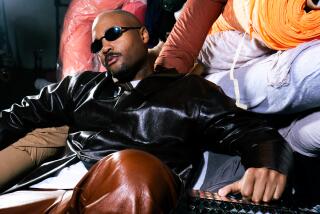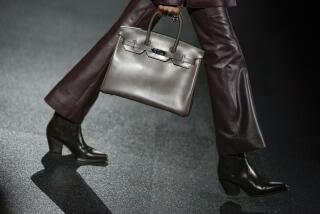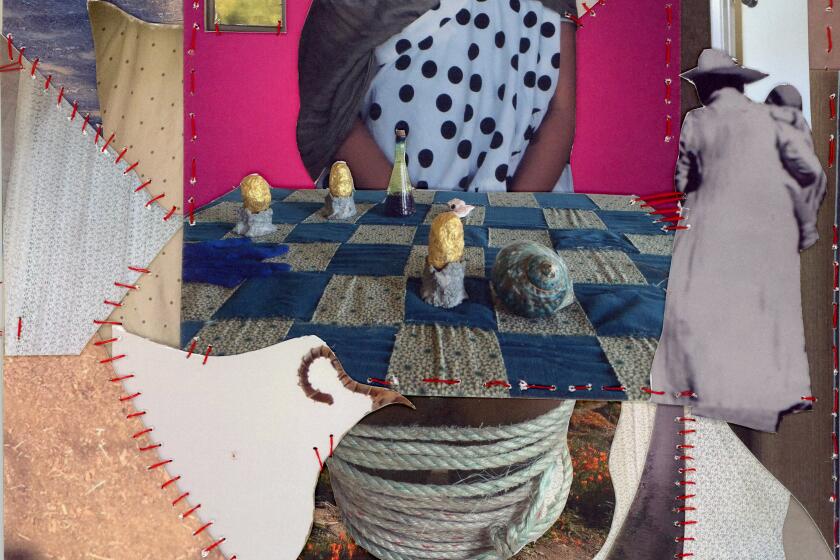Inside the luxury factory
BEFORE you reach for the plastic to buy one more $1,000 handbag, reach for “Deluxe: How Luxury Lost Its Luster” by Dana Thomas, a Paris-based Newsweek reporter and former model. What “Fast Food Nation” did for food service, this book does for fashion, exposing the underbelly of the $157-billion luxury industry and the lockstep consumer psychology behind its glamorous veneer.
What could the Big Mac and the Vuitton Speedy bag possibly have in common? Both are products of global corporations with an emphasis on profits over prestige, both are backed by massive advertising campaigns, both are about creating a craving for something that confers an identity.
Thomas writes with an outsider’s fascination of the label-obsessed. She wonders at the prostitutes in Tokyo who prefer to be paid in designer goods, and tourists who would rather shop the duty-free galleria during their vacations in Waikiki than enjoy the sun and sand. And really, when forced to confront our own credit card demons, how many of us discover we have spent more than we should have on a Prada this or that?
Although we think we are buying fine craft, quality, heritage and a pampered buying experience, what we are really getting is as devoid of substance as a junk food meal. To make luxury accessible, Thomas writes, the tycoons have stripped away what made it “luxury” in the first place.
Today, 35 major brands control 60% of the business. They are not run by the original founders. And the designers themselves are disposable, as we saw with the ouster of Tom Ford at Gucci. Most luxury brands are helmed by tycoons, like Bernard Arnault, president of Moet Hennessy Louis Vuitton, who create “perfectly good products,” Thomas said in a telephone interview, “but not dreams.” Today, luxury is prepackaged in identical stores (many designed by Peter Marino). Brands fight their way into our consciousness with massive advertising campaigns, over-the-top fashion shows, celebrity mannequins on the payroll and seasonal “It” bags with an average markup of 10 to 12 times the actual price.
Luxury is available at every price level, at outlet malls, online, in dusty discount storefronts. And it is this soulless expansion of the luxury market, Thomas suggests, that could be its ruin.
But why shouldn’t everyone own a designer handbag? Sure, not every brand is handcrafting purses like Hermès, for which Thomas has much praise. But how many people can afford Hermès’ $6,000 prices? Surely even the most inexpensive bags from Vuitton are higher quality than what’s generally produced for the mass market. Plus, they make us happy, as if we’ve carved out a piece of the good life.
The problem, Thomas writes in “Deluxe” (Penguin), is that this luxury boom has a dark underbelly mired in counterfeit goods and poor labor practices. Thomas rides along with the Chinese police when they raid a factory in Guangzhou, and the child workers throw cans and bottles, “because we were basically making them homeless,” she says, explaining how many factory bosses house their workers.
Luxury brands get around the stigma of this kind of production by putting the handle on a bag or the sole on a shoe in Italy, then slapping a “Made in Italy” label on it.
So what is the future of luxury? Profits continue to climb, especially in the emerging markets of Russia, India and China, where corporate growth is focused. Meanwhile, back in the West, brands are successfully fending off luxury fatigue with limited-edition products and more personalized service.
The truth is, for better or worse, brands such as Louis Vuitton and Gucci are not really losing their luster at all -- at least not yet.
booth.moore@latimes.com
More to Read
Sign up for our L.A. Times Plants newsletter
At the start of each month, get a roundup of upcoming plant-related activities and events in Southern California, along with links to tips and articles you may have missed.
You may occasionally receive promotional content from the Los Angeles Times.







